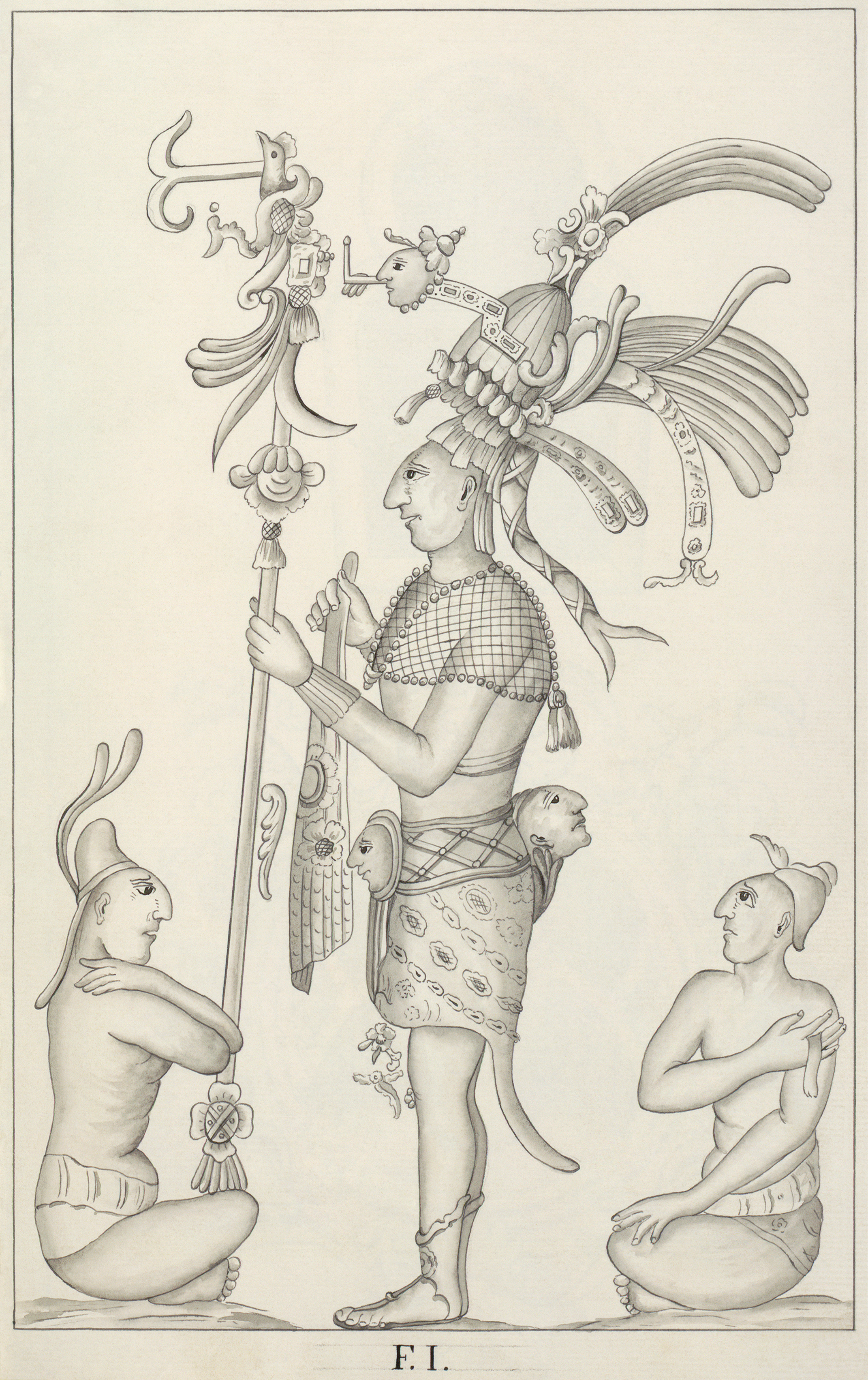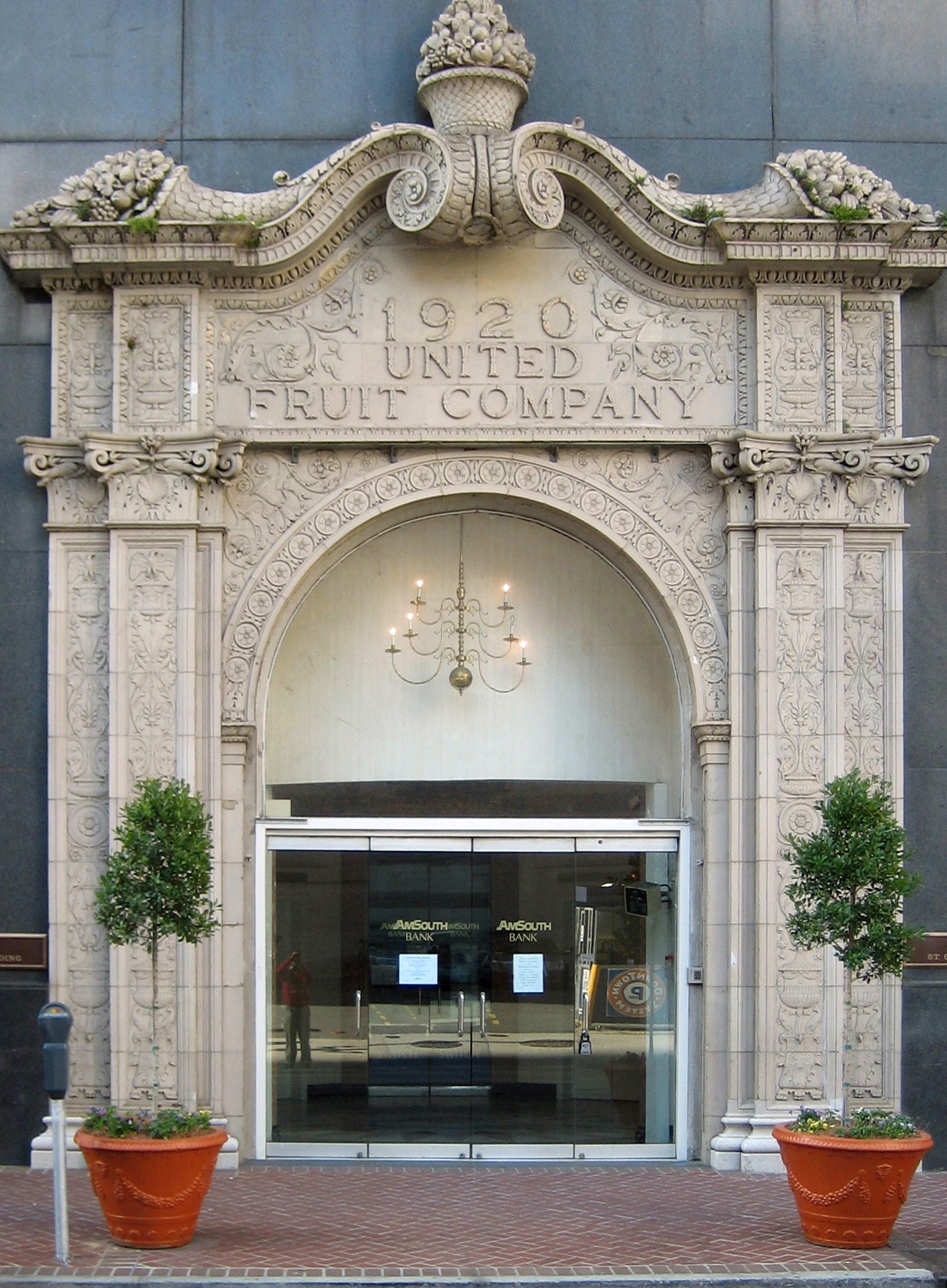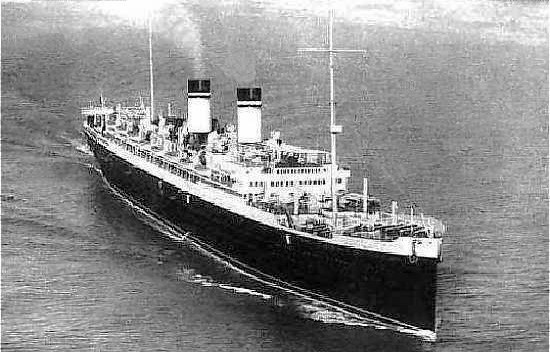|
1910 In Archaeology
Below are notable events in archaeology that occurred in 1910. Excavations * Francis Llewellyn Griffith begins a 4-year series of excavations in Nubia. * Edgar Lee Hewett begins a 4-year project at Quiriguá. * Antonios Keramopoulos excavates the temple of Apollo in Thebes, Greece. * St Piran's Oratory, Perranzabuloe, Cornwall, England. * Coldrum Long Barrow in south east England. * Jesús Carballo begins the first excavations at the archaeological site of Atapuerca in northern Spain. * Robert Ranulph Marett begins a 4-year project at the Paleolithic site of La Cotte de St Brelade on Jersey, Channel Islands. Finds * December – 'Meroë Head' looted from a bronze statue of Roman emperor Augustus buried in the Kushite site of Meroë in modern Sudan, excavated by John Garstang. Events * United Fruit Company purchases land in Guatemala including the Maya site of Quiriguá; 30 acres (120,000 m2) including and around the ruins are set aside as an archaeological zon ... [...More Info...] [...Related Items...] OR: [Wikipedia] [Google] [Baidu] |
1780s In Archaeology
The decade of the 1780s in archaeology involved some significant events. Explorations * 1786: Antonio Bernasconi and Colonel Antonio del Rio examine the ruins of Palenque, making the first map of the site and some crude excavations. Excavations * 1786: Excavation of a Roman villa near Warminster in England by antiquarian Catherine Downes. * 1788: Excavations of Roman city of Viroconium Cornoviorum (Wroxeter) in England by civil engineer Thomas Telford. * Formal excavations continue at Pompeii. Finds * 1780 ** Tomb of the Scipios rediscovered in Rome. ** '' Discobolus Palombara'' discovered in Rome. * 1781: Roman coin hoards found in England near Eye, Suffolk (approximate date) and Stanmore, near London. * 1782: Tomb of Catherine Parr (d. 1548) rediscovered in Sudeley Castle, England. * 1786: Gold thumb ring of Senicianus discovered near Calleva Atrebatum (Silchester) in England. * 1789: The Stony Stratford Hoard uncovered in England. * Xagħra Stone Circle first discovered in ... [...More Info...] [...Related Items...] OR: [Wikipedia] [Google] [Baidu] |
Paleolithic
The Paleolithic or Palaeolithic (), also called the Old Stone Age (from Greek: παλαιός ''palaios'', "old" and λίθος ''lithos'', "stone"), is a period in human prehistory that is distinguished by the original development of stone tools, and which represents almost the entire period of human prehistoric technology. It extends from the earliest known use of stone tools by hominins, 3.3 million years ago, to the end of the Pleistocene, 11,650 cal BP. The Paleolithic Age in Europe preceded the Mesolithic Age, although the date of the transition varies geographically by several thousand years. During the Paleolithic Age, hominins grouped together in small societies such as bands and subsisted by gathering plants, fishing, and hunting or scavenging wild animals. The Paleolithic Age is characterized by the use of knapped stone tools, although at the time humans also used wood and bone tools. Other organic commodities were adapted for use as tools, includ ... [...More Info...] [...Related Items...] OR: [Wikipedia] [Google] [Baidu] |
Maya Civilization
The Maya civilization () of the Mesoamerican people is known by its ancient temples and glyphs. Its Maya script is the most sophisticated and highly developed writing system in the pre-Columbian Americas. It is also noted for its art, architecture, mathematics, calendar, and astronomical system. The Maya civilization developed in the Maya Region, an area that today comprises southeastern Mexico, all of Guatemala and Belize, and the western portions of Honduras and El Salvador. It includes the northern lowlands of the Yucatán Peninsula and the highlands of the Sierra Madre, the Mexican state of Chiapas, southern Guatemala, El Salvador, and the southern lowlands of the Pacific littoral plain. Today, their descendants, known collectively as the Maya, number well over 6 million individuals, speak more than twenty-eight surviving Mayan languages, and reside in nearly the same area as their ancestors. The Archaic period, before 2000 BC, saw the first developments in agricul ... [...More Info...] [...Related Items...] OR: [Wikipedia] [Google] [Baidu] |
Guatemala
Guatemala ( ; ), officially the Republic of Guatemala ( es, República de Guatemala, links=no), is a country in Central America. It is bordered to the north and west by Mexico; to the northeast by Belize and the Caribbean; to the east by Honduras; to the southeast by El Salvador and to the south by the Pacific Ocean. With an estimated population of around million, Guatemala is the most populous country in Central America and the 11th most populous country in the Americas. It is a representative democracy with its capital and largest city being Nueva Guatemala de la Asunción, also known as Guatemala City, the most populous city in Central America. The territory of modern Guatemala hosted the core of the Maya civilization, which extended across Mesoamerica. In the 16th century, most of this area was conquered by the Spanish and claimed as part of the viceroyalty of New Spain. Guatemala attained independence in 1821 from Spain and Mexico. In 1823, it became part of the Fe ... [...More Info...] [...Related Items...] OR: [Wikipedia] [Google] [Baidu] |
United Fruit Company
The United Fruit Company (now Chiquita) was an American multinational corporation that traded in tropical fruit (primarily bananas) grown on Latin American plantations and sold in the United States and Europe. The company was formed in 1899 from the merger of the Boston Fruit Company with Minor C. Keith's banana-trading enterprises. It flourished in the early and mid-20th century, and it came to control vast territories and transportation networks in Central America, the Caribbean coast of Colombia and the West Indies. Although it competed with the Standard Fruit Company (later Dole Food Company) for dominance in the international banana trade, it maintained a virtual monopoly in certain regions, some of which came to be called banana republics – such as Costa Rica, Honduras, and Guatemala. United Fruit had a deep and long-lasting impact on the economic and political development of several Latin American countries. Critics often accused it of exploitative neocolonialism, and ... [...More Info...] [...Related Items...] OR: [Wikipedia] [Google] [Baidu] |
John Garstang
John Garstang (5 May 1876 – 12 September 1956) was a British archaeologist of the Ancient Near East, especially Egypt, Sudan, Anatolia and the southern Levant. He was the younger brother of Professor Walter Garstang, FRS, a marine biologist and zoologist. Garstang is considered a pioneer in the development of scientific practices in archaeology as he kept detailed records of his excavations with extensive photographic records, which was a comparatively rare practice in early 20th-century archaeology. Biography John Garstang was born in Blackburn on 5 May 1876, the sixth child of Walter and Matilda Garstang. He was educated at Blackburn Grammar School and in 1895 he obtained a scholarship for Jesus College, Oxford to study mathematics. While at Oxford, Garstang became interested in archaeology and conducted excavations at Ribchester. Encouraged to take up archaeology, Garstang excavated other Romano-British sites during his vacations from Oxford. After gaining a 3rd f ... [...More Info...] [...Related Items...] OR: [Wikipedia] [Google] [Baidu] |
Sudan
Sudan ( or ; ar, السودان, as-Sūdān, officially the Republic of the Sudan ( ar, جمهورية السودان, link=no, Jumhūriyyat as-Sūdān), is a country in Northeast Africa. It shares borders with the Central African Republic to the southwest, Chad to the west, Egypt to the north, Eritrea to the northeast, Ethiopia to the southeast, Libya to the northwest, South Sudan to the south and the Red Sea. It has a population of 45.70 million people as of 2022 and occupies 1,886,068 square kilometres (728,215 square miles), making it Africa's List of African countries by area, third-largest country by area, and the third-largest by area in the Arab League. It was the largest country by area in Africa and the Arab League until the 2011 South Sudanese independence referendum, secession of South Sudan in 2011, since which both titles have been held by Algeria. Its Capital city, capital is Khartoum and its most populated city is Omdurman (part of the metropolitan area of Khar ... [...More Info...] [...Related Items...] OR: [Wikipedia] [Google] [Baidu] |
Meroë
Meroë (; also spelled ''Meroe''; Meroitic: or ; ar, مرواه, translit=Meruwah and ar, مروي, translit=Meruwi, label=none; grc, Μερόη, translit=Meróē) was an ancient city on the east bank of the Nile about 6 km north-east of the Kabushiya station near Shendi, Sudan, approximately 200 km north-east of Khartoum. Near the site is a group of villages called Bagrawiyah ( ar, البجراوية). This city was the capital of the Kingdom of Kush for several centuries from around 590 BC, until its collapse in the sixth century AD. The Kushitic Kingdom of Meroë gave its name to the "Island of Meroë", which was the modern region of Butana, a region bounded by the Nile (from the Atbarah River to Khartoum), the Atbarah and the Blue Nile. The city of Meroë was on the edge of Butana. There were two other Meroitic cities in Butana: Musawwarat es-Sufra and Naqa. The first of these sites was given the name Meroë by the Persian king, Cambyses, in honor of his sis ... [...More Info...] [...Related Items...] OR: [Wikipedia] [Google] [Baidu] |
Kushite
The Kingdom of Kush (; Egyptian: 𓎡𓄿𓈙𓈉 ''kꜣš'', Assyrian: ''Kûsi'', in LXX grc, Κυς and Κυσι ; cop, ''Ecōš''; he, כּוּשׁ ''Kūš'') was an ancient kingdom in Nubia, centered along the Nile Valley in what is now northern Sudan and southern Egypt. The region of Nubia was an early cradle of civilization, producing several complex societies that engaged in trade and industry. The city-state of Kerma emerged as the dominant political force between 2450 and 1450 BC, controlling the Nile Valley between the first and fourth cataracts, an area as large as Egypt. The Egyptians were the first to identify Kerma as "Kush" and over the next several centuries the two civilizations engaged in intermittent warfare, trade, and cultural exchange. Much of Nubia came under Egyptian rule during the New Kingdom period (1550–1070 BC). Following Egypt's disintegration amid the Late Bronze Age collapse, the Kushites reestablished a kingdom in Napata (now modern ... [...More Info...] [...Related Items...] OR: [Wikipedia] [Google] [Baidu] |
Augustus
Caesar Augustus (born Gaius Octavius; 23 September 63 BC – 19 August AD 14), also known as Octavian, was the first Roman emperor; he reigned from 27 BC until his death in AD 14. He is known for being the founder of the Roman Principate, which is the first phase of the Roman Empire, and Augustus is considered one of the greatest leaders in human history. The reign of Augustus initiated an imperial cult as well as an era associated with imperial peace, the ''Pax Romana'' or ''Pax Augusta''. The Roman world was largely free from large-scale conflict for more than two centuries despite continuous wars of imperial expansion on the empire's frontiers and the year-long civil war known as the "Year of the Four Emperors" over the imperial succession. Originally named Gaius Octavius, he was born into an old and wealthy equestrian branch of the plebeian ''gens'' Octavia. His maternal great-uncle Julius Caesar was assassinated in 44 BC, and Octavius was named in Caesar' ... [...More Info...] [...Related Items...] OR: [Wikipedia] [Google] [Baidu] |
Meroë Head
The Meroë Head, or Head of Augustus from Meroë, is a larger-than-life-size bronze head depicting the first Roman emperor, Augustus, that was found in the ancient Nubian site of Meroë in modern Sudan in 1910. Long admired for its striking appearance and perfect proportions, it is now part of the British Museum's collection. It was looted from Roman Egypt in 24 BC by the forces of queen Amanirenas of Kush and brought back to Meroe, where it was buried beneath the staircase of a temple. Discovery and excavation The head was excavated by the British archaeologist John Garstang in December 1910 at Meroë, which had been the capital of the Kingdom of Kush for several centuries. It was found near a mound (M292) under what was once a temple staircase. This was a tremendous find, considering the distance between the Sudan and Rome. The statue had been purposely buried over 1900 years previously, and was well preserved due to the hot, dry conditions. His excavation report states, “Jus ... [...More Info...] [...Related Items...] OR: [Wikipedia] [Google] [Baidu] |








